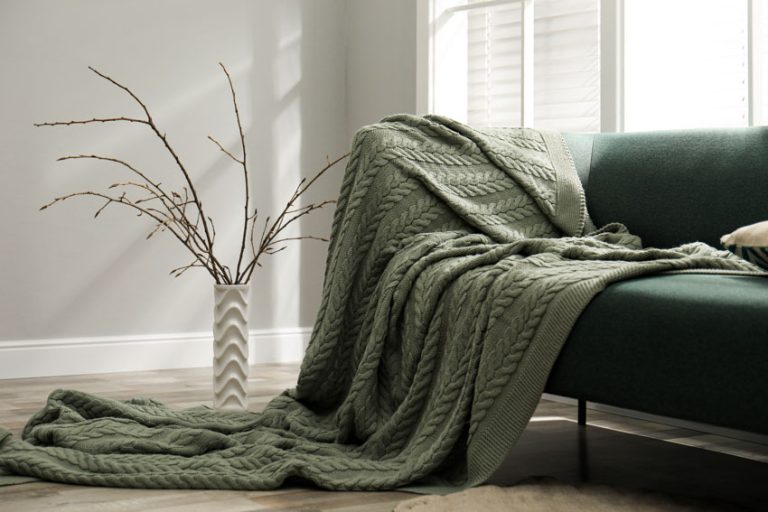Tatami Floor Mat (Designs, Sizes & Uses)
Here we share what a tatami floor mat is including its size, cost, cleaning tips, usability ideas, and if it’s possible to sleep on tatami mat flooring.
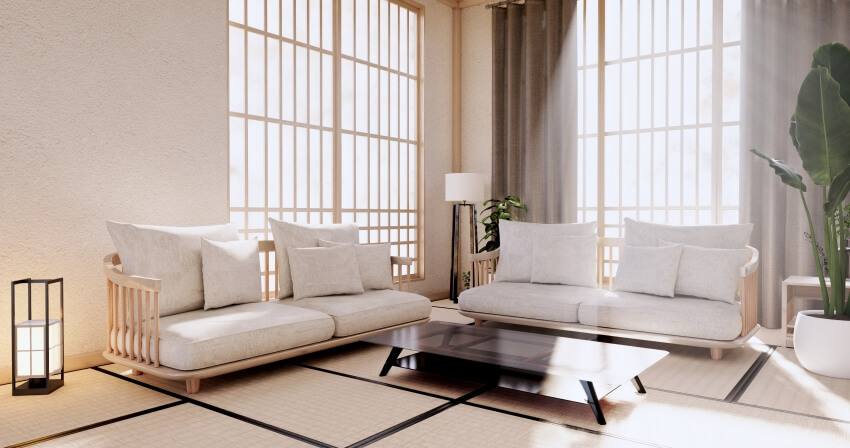
Japanese culture and style are known for their minimalist approach and practicality. And this applies even to their flooring, especially since a tatami floor mat provides a comforting and relaxing appeal that you would want your home to have.
If you’re thinking about using this Japanese type of floor mat in your own home, make sure you know what you’re dealing with.
What Is A Tatami Mat?
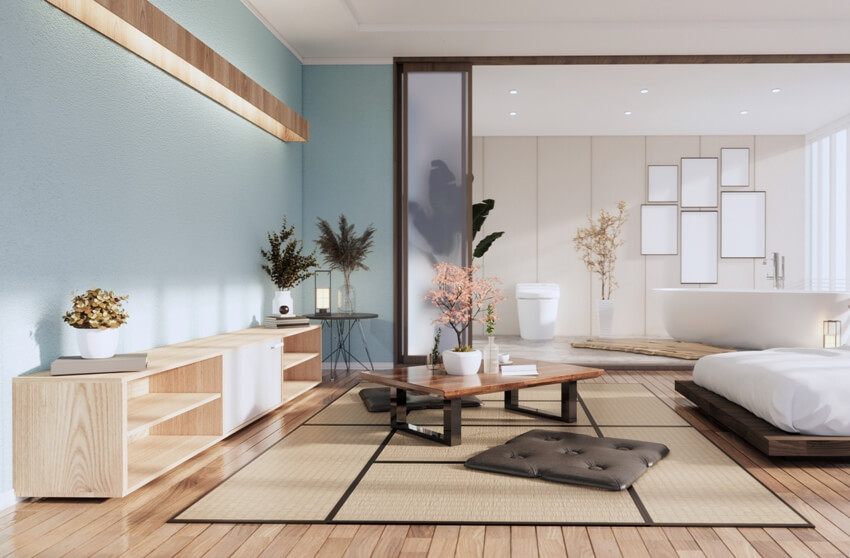
Traditionally made in Japan, a tatami floor mat is a unique creation made from woven straw that showcases Japanese culture and way of life. Today, most homes either don’t have tatami mat flooring or have one area in the home using a tatami mat.
And that area is usually either the bedroom (using a tatami mattress) or the living room. It is popularly used in temples, inns, and restaurants that feature traditional Japan.
Tatami mats can be tracked in history way back in the 8th century during the Nara period when upper-class citizens and nobility used them for sleeping. They extended to be used for sitting areas and cover entire rooms in the 16th century but still limit their usage to wealthy and high-class families. It was in the 17th century when all classes of the society were using the mats and integrating them as part of their homes.
A tatami mat is made from soft igusa/rush straw skin that’s woven in, a compacted rice straw core, and a brocade cloth to cover the wooden edges and keep the edges clean and neat. The rice straw core has been replaced with polystyrene foam or wood chips.
Newly-made tatamis are usually green but they turn yellow throughout the years as the mats grow older. The grass scent is strong in the new mats but also fades in time, much the same as their color.
Tatami mats evolved through time and not just its core. Straws also became thicker, turning the mats softer and more comfortable. And the sizes of the mats also became standardized. The mats became a staple in Japanese interior design starting in the Edo period.
Today, tatami mats are made by machines and primarily manufactured in Fukuoka, Hiroshima, Kouchi, Okayama, and Kumamoto where the rush grass is grown and woven into mats. The weaving process takes about 1 and a half hours, with 4000 to 7000 pieces of rush used to make one tatami mat.
Using A Tatami Style Mat As Flooring
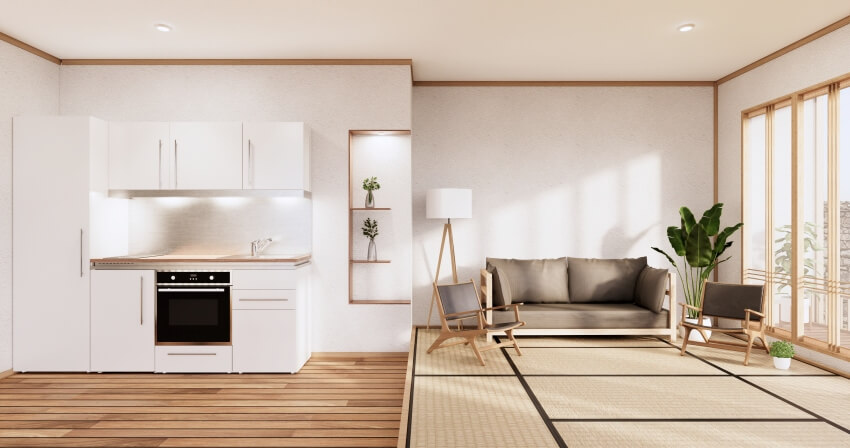
Tatami mats became popular as flooring and an element that became recognized to be part of Japanese culture and homes. Besides the lovely grass scent, they add cushioning and breathability and showcase minimalist appeal.
Tatami mats are not just used in homes but also in commercial spaces, including inns and restaurants. Gyms are also popular for using tatami mat flooring, particularly martial arts gyms.
The tatami mat is the traditional flooring for Japanese martial arts gyms. It is ideal in this setting because of its firm quality mixed with its ability to withstand impact- a very important characteristic when used in a martial arts gym.
Japanese martial arts like aikido, judo, and karate consider the use of a tatami mat as part of the routine, where stepping on the mat is an important and sacred part of any match. This signifies that you’ve entered the martial arts zone and the match will officially start. But instead of the traditional straws, today’s tatami mats used in martial arts gyms are made from thick foam.
Using a tatami mat in your home is not limited to Japanese culture. Its strength is in its ability to turn an area or room into a comfortable and calming space.
This is the reason why it’s perfect to be installed in sitting areas like the living room or in the bedrooms where peace and relaxation are highly vital. And because of its softness and breathability, it is also a safe option for your children’s room or play area.
If you’re planning on using a tatami floor for your home, you can do so. You can even lay it down over your hardwood flooring. And if you want to transport traditional Japan to your home, converting one of your rooms or your entire room into a traditional Japanese home is also possible simply by using a tatami mat as flooring.
Tatami Room Mat Size

The sizes of tatami mats have been standardized starting from the Edo period when the mats in Japanese homes became common and ubiquitous. Four standard sizes came to be, including Kyukma, Chuukyouma, Edoma, and Danchima which are all measured by “jo”. The extensive use of tatami mats gave birth to its own measuring unit.
Jo refers to the number of tatami mats that can fit a specific room. But this is very difficult to determine when you’re considering having tatami mats at home and there are now more modern measurements to use.
The most common sizes are full-size and half-size tatami mats. The standard size falls 35.827 inches (910 mm) x 71.654 inches (1820 mm).
How Big Is A Full Size Tatami
A full-size tatami mat has a 2:1 ratio but they can differ depending on where they are made. Tatami mats are made to fit with the room and so should be flexible and accommodating in size.
Full-size Tokyo tatami mats measure 34.646 inches (880 mm) x 69.291 inches (1760 mm) while Kyoto tatami mats measure 37.402 inches (950 mm) x 75.197 inches (1910 mm). They have thicknesses of around 1.969 inches (5 cm) to 2.362 inches (6 cm).
Tatami Cost
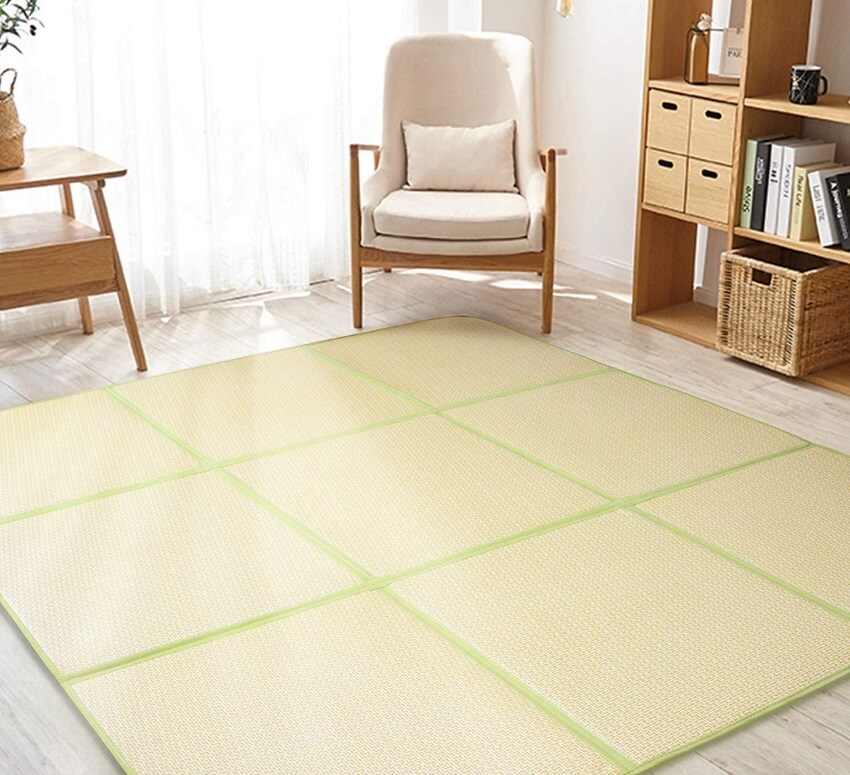
If you purchase a tatami floor mat in Japan, a new handmade one will cost between 50,000 yen (366.78 US dollars to 180,000 yen (1,320.40 US dollars). If you want something cheaper though, you can buy machine-made tatami mats that cost around 8,000 yen (58.68 US dollars) to 40,000 yen (293.41 US dollars).
Tatami Flooring Cost
For tatami mat flooring, it will take more than just purchasing the tatami mat since you will need the help of professionals in its installation.
Installation and replacement of tatami mats would usually cost around 8,000 yen (58.68 US dollars) to 14,000 yen (102.66 US dollars) per mat. Some of the factors that will affect the cost include the number of mats used and the quality of rush straws in the mat.
Sleeping On A Tatami Surface
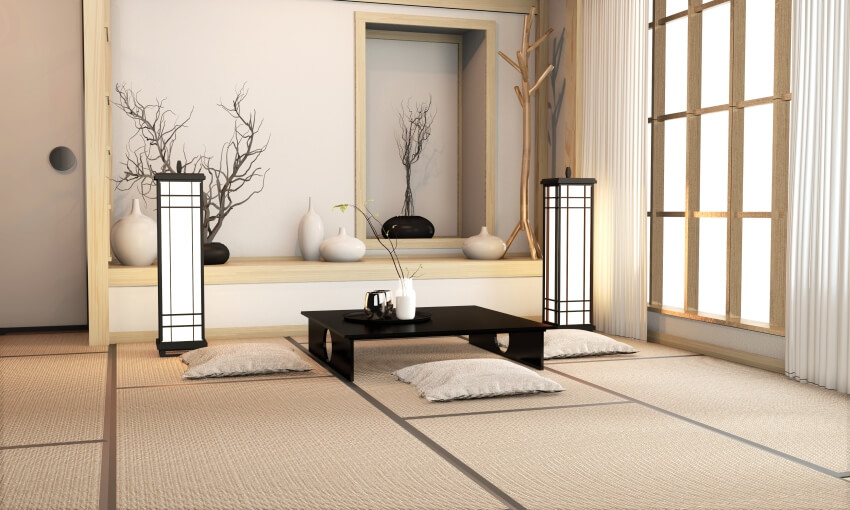
Sleeping on a tatami floor mat is something you can do since it is soft and breathable and not like the usual floor mat. If you want, you can use a tatami mattress instead or also known as the Japanese futon if the tatami mat is not comfortable enough for you. Visit this page for more bed alternatives.
Best Way To Clean Tatami Grass Material
One of the drawbacks of using a tatami mat is that it’s difficult to clean, particularly the grass material that can easily pick up and absorb both liquid and dirt. Mold buildup is also possible since the mat is sensitive to humidity. The solution is to regularly clean the tatami mat and here are some ways to do so:
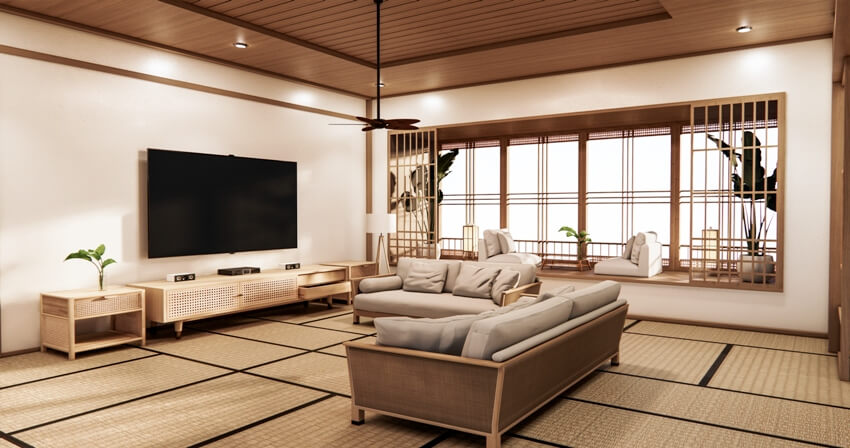
• Tatami-specific vacuum
• Tatami-designed mop
• Cleaning using a dry cloth
• Use a soft straw broom
Make sure to wipe and sweep in the direction of the rush grass and not against it. Since authentic tatami may easily be damaged, be more careful in its usage, from placing only a lightweight piece of furniture on top to not wearing shoes when stepping on it.
Replacement is also done as soon as 5 to 6 years since the tatami mat has a short lifespan.
Visit our guide to the types of futons for more related decor ideas.




